
Aren’t you tired of ketchup and mustard? Even vinegar-based hot sauce on your fried chicken can get boring. Americans love their condiments, sure, but let’s be real: the repetition of dipping, dunking, saucing, and slathering the same ubiquitous flavors on food can get pretty stale. Palates are meant to be broadened, after all — that’s what makes eating fun.
It’s time to shake things up, and there are plenty of condiments that typically get relegated to the “international aisle” just waiting to give your mouth a fresh flavor bomb. To find some standouts, we asked our diverse team of writers to rave about the condiments they love, beyond ketchup, mustard, and standard mayo. Their entries (and the fact that most of these are widely available) provide a nice reminder of just how culturally rich and diverse America’s food scene actually is.
Dumpling Sauce — Janice Williams
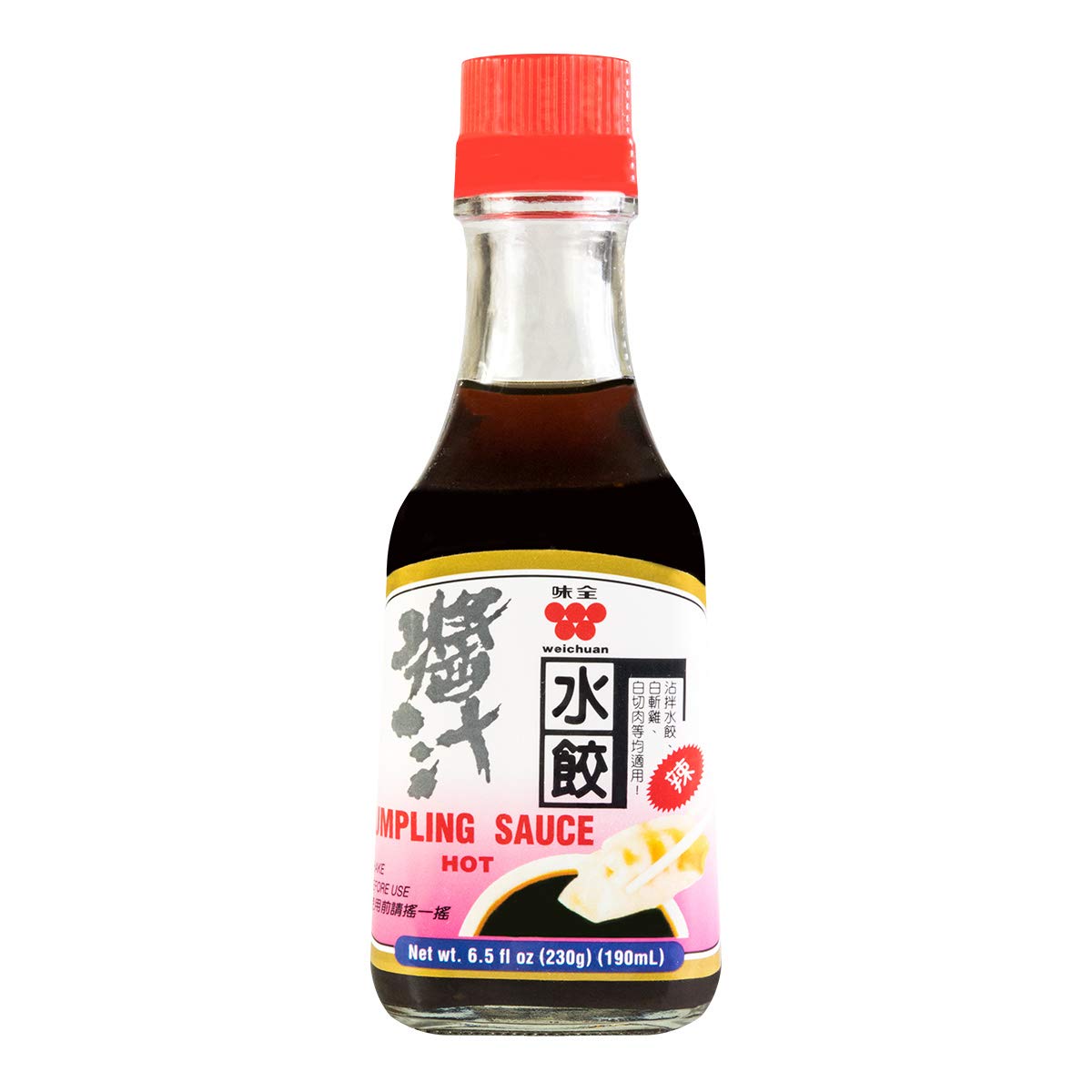
Why I Like It:
I love dumplings. Steamed or pan-fried. Stuffed with pork or veggies, chicken or shrimp—it doesn’t matter, I want to eat them. If you put a platter of them in front of me, I will inhale that platter and leave not a single one for you. I will order them from anywhere at any time on any day or night. I will hop on the train to Chinatown when it’s 20 degrees and snowing just to eat my weight in Shanghainese Soup Dumplings at Nom Wah Tea Parlor, and I won’t feel the least bit bad for placing a second order to go.
Shumai? Goyza? Potstickers? Frozen dumplings from my local grocery store? Give them to me. I’ll eat those too.
Naturally, as a self-proclaimed dumpling enthusiast, I know that the best way to enjoy dumplings is with the proper sauce. You could go the traditional soy-sauce route (trust me, I do that, too), but nothing quite brings out the flavor of the filling or compliments the dough quite like the salty, sweet, sometimes spicy, sometimes tangy dumpling sauce. Most have a dash of sesame oil that punches up the flavor with a little nuttiness, and there’s a barely-there sweet aftertaste that’s a little more satisfying to the senses than straight-up soy sauce.
There are plenty of dumpling sauces that exist in this world, but my go-to is Wei-Chaun. I prefer the hot flavor, but there’s a mild version for those who can’t stand the heat.
How I Use It:
I quite literally bathe my dumplings in this stuff. The way it enhances the dumpling’s natural taste, I need it on every bite. But you can use this sauce for more than that. Drizzle a little on the top of a burger hot off the grill. Are you eating veggie and meat kabobs? Dunk those suckers in that sauce, too.
Where I Buy It:
You can a find some of brands and styles of dumpling sauce in the international food-aisle of most grocery stores, and there’s always Amazon. But for the most variety, hit up your local Asian market.
Fish Sauce — Zach Johnston
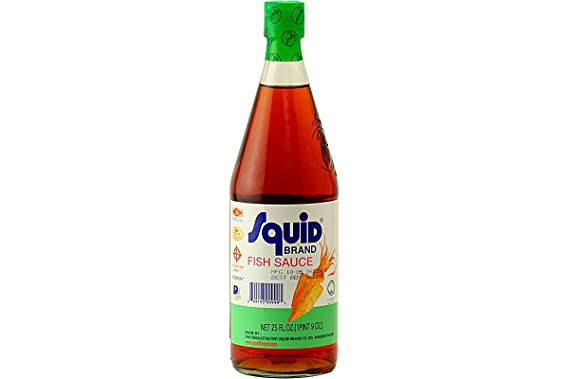
Why I Like It:
Fish sauce, specifically Squid Brand, has been a part of my life for a very long time. I’d like to say I picked up using the fishy-smelling juice when I lived in Southeast Asia back in the mid-aughts, but I’d already been using it for years before that. I was sort of always aware of fish sauce — having grown up in the Pacific Northwest where a decent bowl of tangy soup or fried noodles were never far away — then started using it heavily for myself in Prague in 2003, when I lived there.
There’s a large Vietnamese community in Prague (mostly thanks to those two countries both being communist regimes in the 20th century) and that means there are a few markets around the outskirts of the city devoted to imports from Vietnam and Southeast Asia, in general. Those spots turned me on to a lot of good food. My addiction only grew once I actually lived and worked in Southeast Asia.
These days, fish sauce is something I use all the time. So much so, I buy the big bottle of Squid Brand — the one that’s the same size as a whisky bottle. And it only lasts about as long as a bottle of good whiskey. Put simply, it’s one of the most versatile condiments/flavor enhancers there is. It’s like Worchestershire times a million or soy sauce with a nice funk that’s somehow lighter while also bringing more umami. An absolute must for any serious home cook.
How I Use It:
A trick I learned working in kitchens in Europe was that chefs would use Squid Brand fish sauce in place of more expensive anchovy in recipes from all over the continent (fish sauce used to be huge in Roman cuisine, for instance). It’s basically anchovy essence that’s also pure umami. So I started adding it to yolk-based salad dressings. It also works in things like meatballs when you want that extra savory oompf. Dash some on rice when you fluff it to add new depths. Hell, dash some on freshly popped popcorn.
Of course, there are soups, stews, and dry noodle applications. One of my favorite uses is a cold noodle side that’s just fish sauce, crushed garlic, diced green onion, brown sugar, sesame oil, and sesame seeds. Spritz it all with lemon juice and you have one of the best sides for steak or salmon ever.
The point is that, yes, this is very much a necessity if you’re trying to figure out dishes from the eastern reaches of Asia. But don’t stop there. Umami is a key flavor component in cuisines the world over (anchovies were a huge trading commodity of my father’s people around the Salish Sea before Europeans showed up) and fish sauce really makes almost everything savory better.
Where I Buy It:
Generally, the Costco-like store I do my weekly shopping at has Squid Brand for around $4 for a big bottle. You can find it in any Korean, Chinese, Thai, or Vietnamese supermarket in the States if you’re in a region where those pop up. Otherwise, you can grab a bottle on Amazon.
Maggi — Loan Hoang
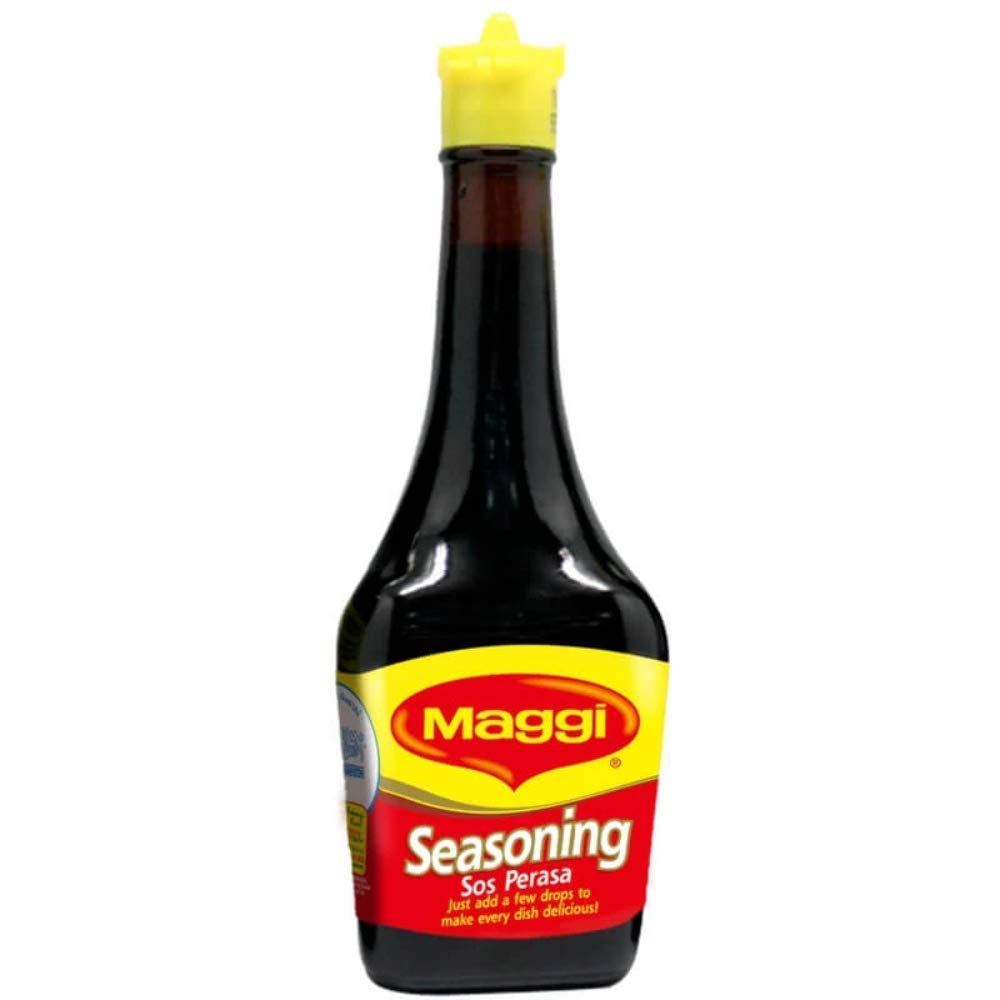
Why I Like It:
Growing up, I didn’t really pay attention to the various brown liquids in my mother’s pantry besides the xì dầu (soy sauce) and nước mắm (fish sauce). In our house, the soy sauce that my sisters and I loved on our rice and eggs, lived in a small bottle with a bright yellow label and red lettering spelling out “MAGGI.”
How I Use It:
In 2006, I had the chance to go to France and Italy at the end of my high school senior year as part of a special trip for AP Gov. While preparing for my trip, my aunts asked me if I could bring them back Maggi Sauce from France and to “make sure it’s the French version.” I was surprised that out of anything they could have asked me to buy, they asked for something so readily available in our supermarkets.
It was only then that I learned Maggi wasn’t soy sauce at all. Maggi is a seasoning sauce (made from hydrolyzed vegetable protein instead of soy) and different countries produce different versions. For my aunts, the French version was the best and it was not yet available in our markets at that time.
I like to use the Chinese Maggi in my everyday cooking—it has a strong, salty, umami profile that goes well with stir-frys and soups.
Where I Buy It:
Luckily today, you don’t have to travel far to try out the different versions of Maggi. They’re readily found in supermarkets and online. As a standalone condiment, I prefer the Maggi Arome Saveur French version, which is a bit milder. If you’re able to get your hands on the Mexican version “Jugo Maggi Limon,” you’ll be able to taste a nice kick of lime in your seasoning sauce.
However…I have yet to get my hands on the Filipino version of Maggi, which is supposed to have more of a garlic flavor to it. Perhaps a trip to the Philippines is in order, post-Covid. As high school me learned: This is a sauce worth traveling for.
S&B Umami Topping-Crunchy Garlic With Chili Oil — Vince Mancini
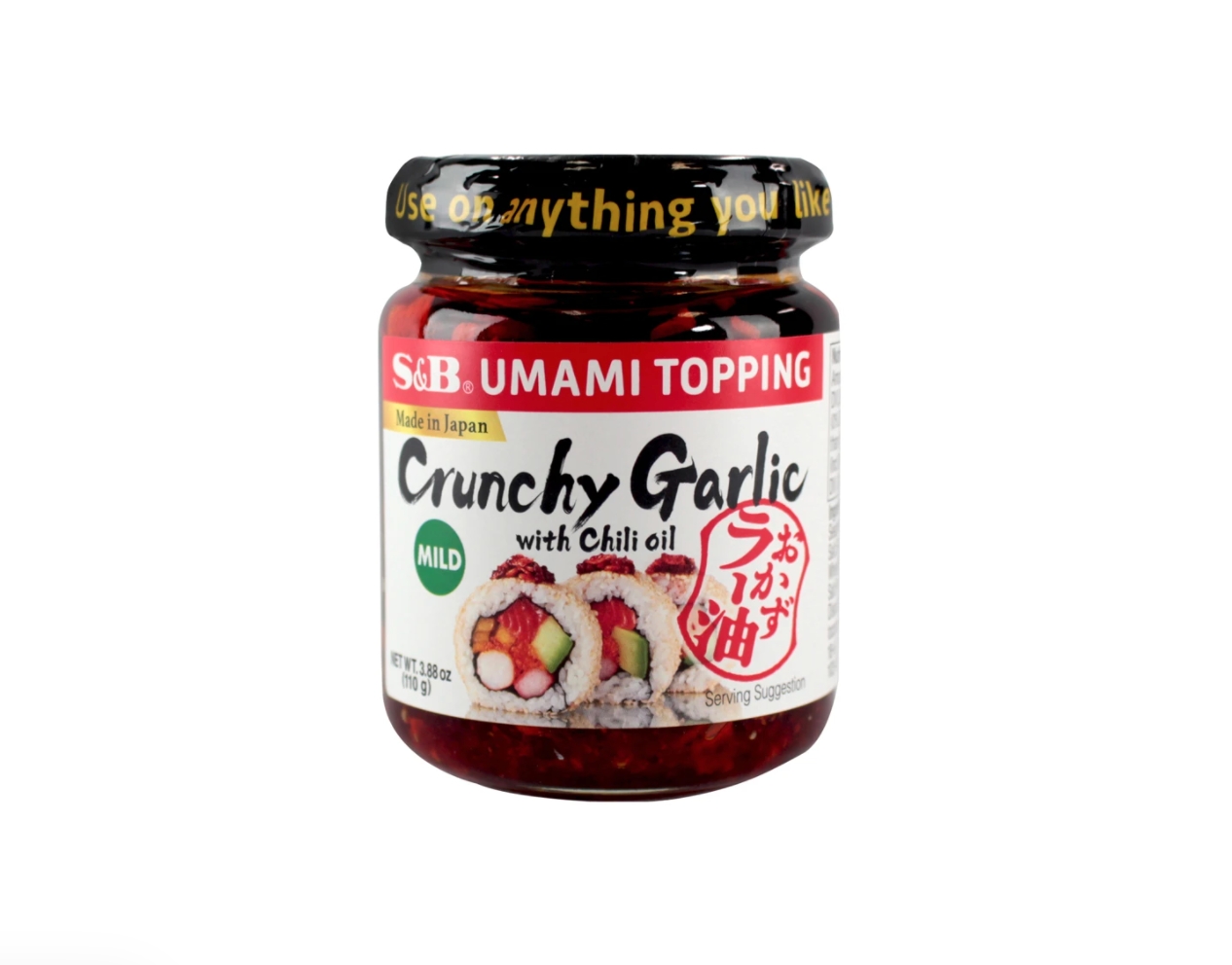
Why I Like It:
A friend introduced me to this stuff from the Asian market a while back and I haven’t gone a day since without it in my fridge. It’s great because while I love any and all things spicy, my stomach and bowels don’t always agree. This stuff comes in “spicy” and “mild,” but neither are really what I would call “hot.” They add a deep, rich concentrated spice flavor that I can eat as much as I want of without worrying that it’s going to put me on the toilet all morning.
How I Use It:
Frying up garlic is definitely something that you *can* do on your own, but having it pre-prepared in a jar is my kind of labor saver. I most often use it on salmon, pork tenderloin, or noodle soups (ramen, pho, etc) but I’ve yet to find a food that it doesn’t improve.
Where I Buy It:
I buy mine at the Asian market in Fresno, but it’s available on Amazon.
Harissa — Janice Williams
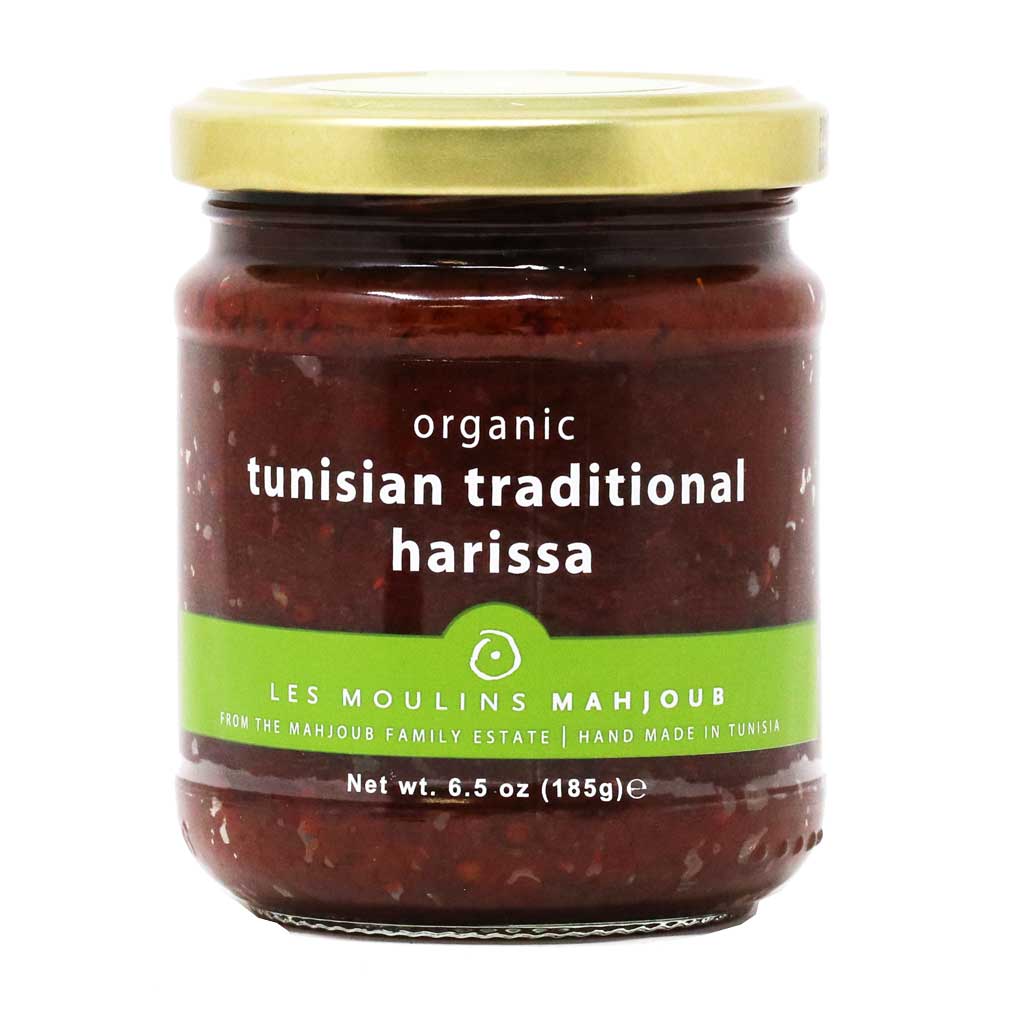
Why I Like It:
During my brief tenure as a waitress in New York City, I worked at a dashing restaurant in the West Village named Bar Bolonat. It was the sister restaurant to the highly acclaimed Balaboosta, owned by the feistiest, sassiest and liveliest woman I’ve ever met, chef and cookbook author Einat Admony.
It was at that little restaurant, which specialized in Israeli and Mediterranean cuisine, where I learned the value and significance of harissa—a vibrant and beautiful red hot chili pepper paste that set my mouth on fire the first time that I had it slathered atop of slice of grilled eggplant with a little tahini, tagarashi, and crispy shallots. I was hooked!
Spicy and aromatic, harissa is commonly used in North African and Middle Eastern cuisine. The recipes for the condiment vary from country to country, but the classic components are usually the same across the board: hot and smoked chili pepper, olive oil, garlic, and a blend of spices like cumin, caraway, and coriander.
My waitressing days are behind me, and Bar Bolonat no longer exists (you can still visit Balaboosta, though!). So now I get my harissa fix via Les Moulins Mahjoub, a Tunisian company that produces a variety of tasty natural grains and spices.
How I Use It:
Use it as a spread. Use it as a dip. Blend it into your soups and stews. Use it to marinate your grilled meats and fish, too. Got bread? Scoop it up and get it in your mouth. There really is no wrong way to use harissa, but one of my favorite ways to use the condiment is as a baste for baked chicken legs and thighs. Spread it over the chicken along with a little salt, pepper and garlic. Toss it in the oven for a good 45 minutes and—BOOM!—dinner is served.
But beware: this condiment lands high on the hot and spicy meter. So a little goes a long way.
Where I Buy It:
I order jars of harissa from my favorite online artisanal grocery shop, My Panier, but you can find Les Moulins Mahjoub and other brands at Whole Foods and Middle Eastern Markets.
Lizano Salsa — Steve Bramucci
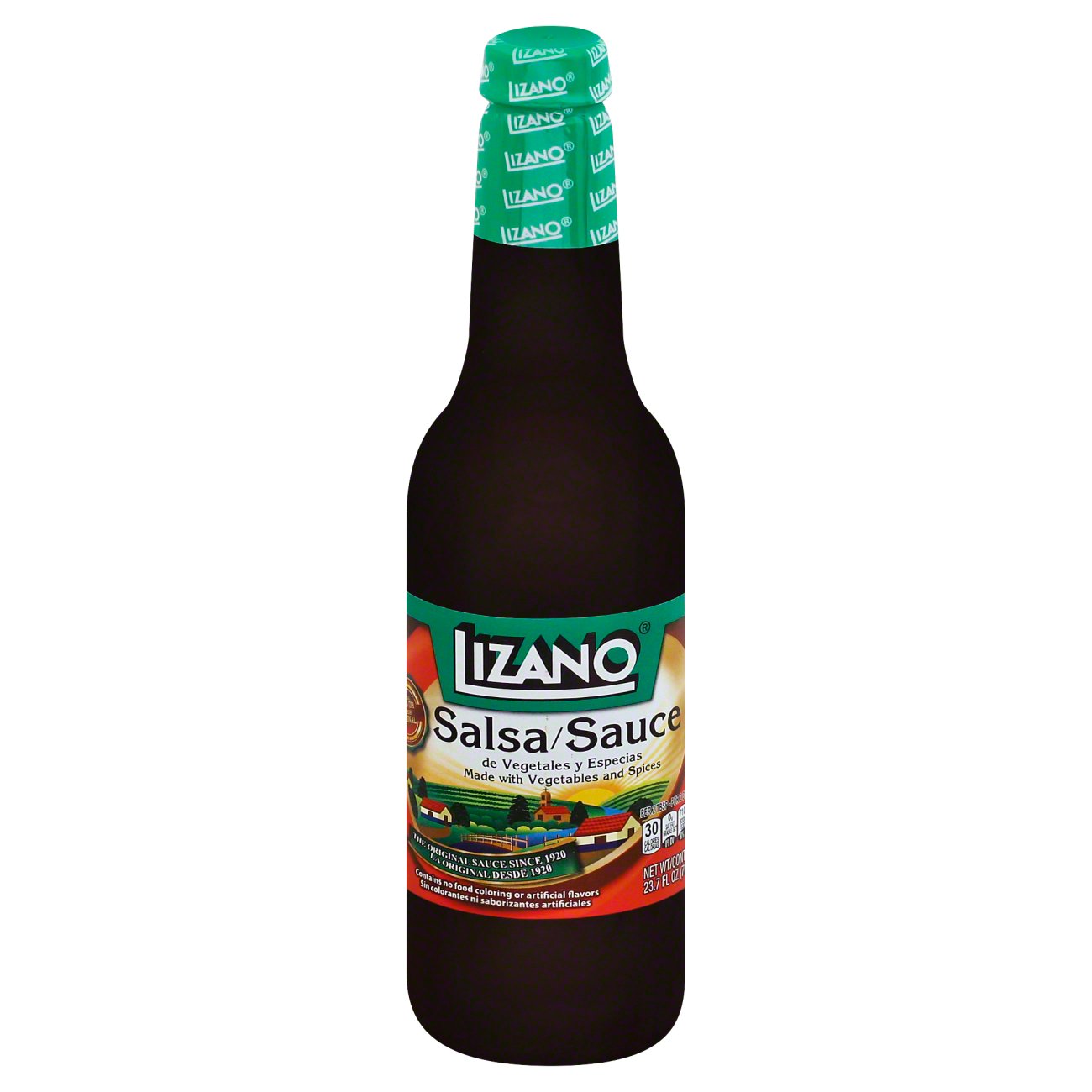
Why I Like It:
In Costa Rica, they have these beans in a bag — also made by Lizano — that are cult-famous. Especially among surfers. And because the various styles of beans (red, black, and pinto) aren’t exported, the only way to get them is to bring them home from a trip or have someone lug a few packs along when they visit you. At my wedding, two friends brought me an entire suitcase full — but it never made it through customs.
For years, I’ve tried to figure out what makes Lizano beans so good. Mostly, I figured it was lard. And I’m sure that’s pretty much correct. But by contacting the company for an article, I learned that this salsa is also a core ingredient. Since that discovery, I’ve used the stuff pretty much every day.
How I Use It:
I pour a little bit into the bases for many of my foods — it’s sort of like a liquid soffrito. It’s in every single bean-based recipe I make, bar none. I also put it into my ground beef during the cooking process if I’m making tacos or sloppy joe’s. Used as a traditional condiment, without being cooked down, it’s pretty potent. I’ll often add some a little to a simple rice and bean dish to amp up the umami or treat it like a salad dressing for greens. It’s also fantastic as an additive to your guac or any storebought salsa.
A true umami bomb that I refuse to live without.
Where I Buy It:
There are Costa Rican shopping sites that carry it (and the beans!), but the shipping costs are exorbitant. I most often rely on Amazon, which sells the full-sized three-pack for $22.
